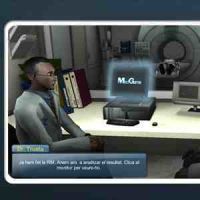Diagnostic errors are medicine’s blind spot, and need urgent action, according to a report, Improving Diagnosis in Health Care, released on 22 September by the U.S. Institute of Medicine’s Committee on Diagnostic Error in Health Care. Other types of medical errors have traditionally received more attention in healthcare, but the spotlight needs to turn on diagnosis, they say: “Improving the diagnostic process is not only possible, but it also represents a moral, professional, and public health imperative.” Multidisciplinary teamwork, with radiologists and pathologists as integral members of the diagnostic team, leadership and patient involvement are all required to improve the situation.
Diagnostic error is the failure to (a) establish an accurate and timely explanation of the patient’s health problem(s) or (b) communicate that explanation to the patient. The committee found that data collected on diagnostic errors is few and far between. Errors are difficult to measure and often found in retrospect. However, they determined that diagnostic errors have many causes, including inadequate collaboration and communication; a healthcare work system ill-designed to support the diagnostic process; limited feedback to clinicians about the accuracy of diagnoses; and a culture that discourages transparency and disclosure of diagnostic errors. As healthcare delivery and diagnosis becomes more complex, errors may increase. The committee states that a significant re-envisioning of the diagnostic process and a widespread commitment to change from a variety of stakeholders will be required. However, they held back from recommending mandatory reporting of diagnostic errors, recognising the difficulties in definition, and the lack of hard data and measurement approaches.
“Better identification, analysis, and implementation of approaches to improve diagnosis and reduce diagnostic error are needed throughout all settings of care”, writes committee Chairman, John R. Ball (pictured below, speaking at the Washington launch). In a statement, he said: “The stereotype of a single physician contemplating a patient case and discerning a diagnosis is not always accurate, and a diagnostic error is not always due to human error. Therefore, to make the changes necessary to reduce diagnostic errors in our health care system, we have to look more broadly at improving the entire process of how a diagnosis made.”
 The 369 page report synthesises current knowledge about diagnostic error and makes 8 recommendations. Key themes are the importance of diagnosis, patient involvement, and teamwork to produce diagnoses. Actions that healthcare organizations can take to design a work system that supports the diagnostic process and reduces diagnostic errors is addressed in one of the chapters.
The 369 page report synthesises current knowledge about diagnostic error and makes 8 recommendations. Key themes are the importance of diagnosis, patient involvement, and teamwork to produce diagnoses. Actions that healthcare organizations can take to design a work system that supports the diagnostic process and reduces diagnostic errors is addressed in one of the chapters.
The report flags up the decrease of in-person consultation of radiologists with the move to digital, and states that improved interoperability between lab and radiology information systems (RIS) and across healthcare organisations is critical to improving the diagnostic process.
Recommendations
1. Facilitate more effective teamwork in the diagnostic process among health care professionals, patients, and their families
The committee notes that pathology and radiology are critical to diagnosis, but not always full members of the diagnostic team. They write: “Enhanced collaboration among pathologists, radiologists, other diagnosticians, and treating health care professionals has the potential to improve diagnostic testing.” They state the importance of involving patients and their families as diagnostic team members, according to their needs, values and preferences. Patients should have access to electronic health records, including clinical notes and diagnostic testing results.
2. Enhance health care professional education and training in the diagnostic process
3. Ensure that health information technologies support patients and health care professionals in the diagnostic process
4. Develop and deploy approaches to identify, learn from, and reduce diagnostic errors and near misses in clinical practice
5. Establish a work system and culture that supports the diagnostic process and improvements in diagnostic performance
Culture and leadership is key, they recommend. “Organisations need to promote a non-punitive culture in which clinicians can identify and learn from diagnostic errors. Organisational leadership can facilitate this culture, provide resources, and set priorities for achieving progress in diagnostic performance and reducing diagnostic errors.”
6. Develop a reporting environment and medical liability system that facilitates improved diagnosis through learning from diagnostic errors and near misses
7. Design a payment and care delivery environment that supports the diagnostic process
The report recommends that payers should recognise the time spent by radiologists, pathologists, radiologists and others in advising referring physicians on diagnostic tests and reports.
8. Provide dedicated funding for research on the diagnostic process and diagnostic errors
The committee included Prof. Hedvig Hricak, chair of the Department of Radiology at Memorial Sloan-Kettering Cancer Center as well as experts on diagnostic error, healthcare measurement and quality, patient engagement, education, psychology, healthcare IT, law, pathology and health economics. The hearings included oral and written testimony from radiology experts Bibb Allen, William Thorwath and Leonard Berlin. In its comments to the committee, the American College of Radiology stated that structured decision support for image ordering and reporting is critical for reducing diagnostic errors.
Links
The report is free to download from nas.edu/improvingdiagnosis
Claire Pillar
Managing editor, HealthManagement.org
Image source: Pixabay
Diagnostic error is the failure to (a) establish an accurate and timely explanation of the patient’s health problem(s) or (b) communicate that explanation to the patient. The committee found that data collected on diagnostic errors is few and far between. Errors are difficult to measure and often found in retrospect. However, they determined that diagnostic errors have many causes, including inadequate collaboration and communication; a healthcare work system ill-designed to support the diagnostic process; limited feedback to clinicians about the accuracy of diagnoses; and a culture that discourages transparency and disclosure of diagnostic errors. As healthcare delivery and diagnosis becomes more complex, errors may increase. The committee states that a significant re-envisioning of the diagnostic process and a widespread commitment to change from a variety of stakeholders will be required. However, they held back from recommending mandatory reporting of diagnostic errors, recognising the difficulties in definition, and the lack of hard data and measurement approaches.
“Better identification, analysis, and implementation of approaches to improve diagnosis and reduce diagnostic error are needed throughout all settings of care”, writes committee Chairman, John R. Ball (pictured below, speaking at the Washington launch). In a statement, he said: “The stereotype of a single physician contemplating a patient case and discerning a diagnosis is not always accurate, and a diagnostic error is not always due to human error. Therefore, to make the changes necessary to reduce diagnostic errors in our health care system, we have to look more broadly at improving the entire process of how a diagnosis made.”
 The 369 page report synthesises current knowledge about diagnostic error and makes 8 recommendations. Key themes are the importance of diagnosis, patient involvement, and teamwork to produce diagnoses. Actions that healthcare organizations can take to design a work system that supports the diagnostic process and reduces diagnostic errors is addressed in one of the chapters.
The 369 page report synthesises current knowledge about diagnostic error and makes 8 recommendations. Key themes are the importance of diagnosis, patient involvement, and teamwork to produce diagnoses. Actions that healthcare organizations can take to design a work system that supports the diagnostic process and reduces diagnostic errors is addressed in one of the chapters. The report flags up the decrease of in-person consultation of radiologists with the move to digital, and states that improved interoperability between lab and radiology information systems (RIS) and across healthcare organisations is critical to improving the diagnostic process.
Recommendations
1. Facilitate more effective teamwork in the diagnostic process among health care professionals, patients, and their families
The committee notes that pathology and radiology are critical to diagnosis, but not always full members of the diagnostic team. They write: “Enhanced collaboration among pathologists, radiologists, other diagnosticians, and treating health care professionals has the potential to improve diagnostic testing.” They state the importance of involving patients and their families as diagnostic team members, according to their needs, values and preferences. Patients should have access to electronic health records, including clinical notes and diagnostic testing results.
2. Enhance health care professional education and training in the diagnostic process
3. Ensure that health information technologies support patients and health care professionals in the diagnostic process
4. Develop and deploy approaches to identify, learn from, and reduce diagnostic errors and near misses in clinical practice
5. Establish a work system and culture that supports the diagnostic process and improvements in diagnostic performance
Culture and leadership is key, they recommend. “Organisations need to promote a non-punitive culture in which clinicians can identify and learn from diagnostic errors. Organisational leadership can facilitate this culture, provide resources, and set priorities for achieving progress in diagnostic performance and reducing diagnostic errors.”
6. Develop a reporting environment and medical liability system that facilitates improved diagnosis through learning from diagnostic errors and near misses
7. Design a payment and care delivery environment that supports the diagnostic process
The report recommends that payers should recognise the time spent by radiologists, pathologists, radiologists and others in advising referring physicians on diagnostic tests and reports.
8. Provide dedicated funding for research on the diagnostic process and diagnostic errors
The committee included Prof. Hedvig Hricak, chair of the Department of Radiology at Memorial Sloan-Kettering Cancer Center as well as experts on diagnostic error, healthcare measurement and quality, patient engagement, education, psychology, healthcare IT, law, pathology and health economics. The hearings included oral and written testimony from radiology experts Bibb Allen, William Thorwath and Leonard Berlin. In its comments to the committee, the American College of Radiology stated that structured decision support for image ordering and reporting is critical for reducing diagnostic errors.
Links
The report is free to download from nas.edu/improvingdiagnosis
Claire Pillar
Managing editor, HealthManagement.org
Image source: Pixabay
References:
National Academies of Sciences, Engineering, and Medicine. 2015. Improving diagnosis in health care. Balogh EP, Miller BT, Ball JR, eds. Washington, DC: The National Academies Press.
Latest Articles
Diagnosis, Medical errors, Diagnostic errors, Radiology, Pathology, Quality improvement
Institute of Medicine report on diagnostic errors - what needs to be done



























